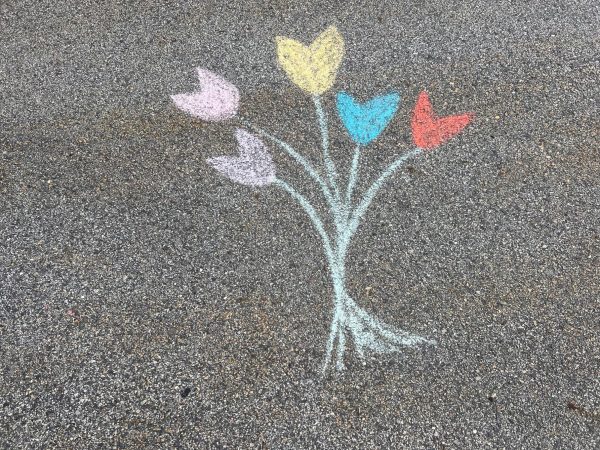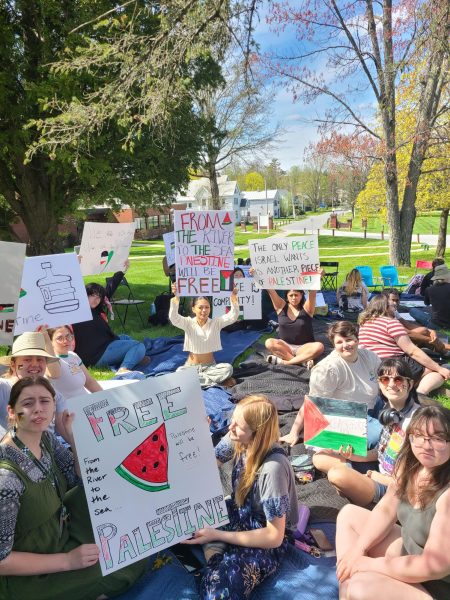Standing Rock Reservation protests continue
Author’s note: I refer to these demonstrators as “protectors” not “protestors” because of their continued fight for the right to clean water and their struggles to protect the environment we all rely upon.
Right now, the largest Native American protest in history is occurring. Protectors from over 200 Native American tribes from across North America have gathered together at the Standing Rock Sioux Reservation in North Dakota to protest the construction of what is known as the North Dakota Access Pipeline (DAPL).
Owned by a Texas oil company, the pipeline is planned to be almost 1,200 miles long and would carry oil from North Dakota all the way through South Dakota, Iowa and Illinois. It was approved by the state of North Dakota and the United States Army Corps of Engineers. The proposed route for the pipeline would be within a mere half mile of the Standing Rock Sioux Reservation and would snake its way through sacred land and burial sites that were guaranteed to Native Americans by government treaties that have continually been disregarded and broken over the past 150 years.
The pipeline would also cross the Missouri River, which carries drinking water to all 8,000 members of the reservation, carries water used for irrigation at farms and ranches and brings drinking water to millions of residents across the United States. A break in the pipeline would not only create disastrous environmental issues, it would endanger the lives and livelihoods of millions of people. And it is not a question of if the pipeline breaks, but when.
The environmental concerns are based on a history of pipelines continually breaking and negatively impacting the environment, and the DAPL developers have skillfully avoided environmental reviews. An article by David Archambault II in the New York Times explains the situation clearly: “The Dakota Access pipeline was fast-tracked from Day 1 using the Nationwide Permit No. 12 process, which grants exemption from environmental reviews required by the Clean Water Act and the National Environmental Policy Act by treating the pipeline as a series of small construction sites. And unlike the better-known Keystone XL project, which was finally canceled by the Obama administration last year, the Dakota Access project does not cross an international border — the condition that mandated the more rigorous federal assessment of the Keystone pipeline’s economic justification and environmental impacts.”
Protectors of the land and natural recourses are stationed alongside Cannonball River, situated on the edge of the Standing Rock Sioux Reservation, and the massive campsite housing the tribes and members from protest and environmental groups is continually expanding. Many tribes that have historically been enemies have come together in solidarity as a symbol of strength to raise awareness of the mistreatment of Native Americans. Protests have involved peaceful and emotional demonstrations, including drum circles, chanting and songs, traditional ceremonies, marches on foot and by horseback, and the blocking of the construction vehicles.
The government’s reaction has been swift and violent. Throughout the past months, armed riot guards have been sent to Standing Rock to break up the demonstrations and arrest dozens of protectors. In September, the National Guard and militarized police forces were sent armed with attack dogs and pepper spray and attacked large groups of demonstrators, pepper spraying and leaving multiple people wounded with dog bites. Journalist Amy Goodman was investigating the situation at Standing Rock and filmed and reported on these violent events. She was charged with trespassing and rioting and a warrant was put out for her arrest. However, once she arrived in court to answer the charges, they were dropped because of lack of probable cause.
Additionally, other journalists and activists have been arrested for joining the demonstrations, including documentary filmmaker and journalist Deia Schlosberg, who was sentenced to up to 45 years in prison for reporting the events unfolding at Standing Rock. Recently, actress Shailene Woodley was arrested and jailed for peacefully demonstrating alongside Standing Rock protectors. She has since been released, but her continued efforts to support Standing Rock and the live streaming of her arrest have helped raise more awareness.
I have been keeping a close watch on the unfolding events of the Standing Rock protest since the first protectors gathered together in July. It has been incredible to see the slow but sure increase in awareness and understanding of this social movement and protest event. Marches of solidarity, protests events, organizations and social media sites in support of the fight against DAPL have been exploding across the country and the internet over the past few months.
Despite the growing support, Standing Rock is still struggling to get its voice heard by those who can make governmental changes. Standing Rock sued the United States Army Corps of Engineers, claiming they were not fully and rightfully consulted by the agency. On Oct. 9, the U.S. Court of Appeals for the District of Columbia Circuit rejected the Standing Rock Sioux Tribe’s request to stop the DAPL to the anger and dismay of tribal leaders and protectors. Additionally, very few mainstream news sources have reported on it, President Barrack Obama has not spoken up in defense of Standing Rock, and neither current presidential candidate has stated their stance on the issue. The silences are telling.
However, more and more individuals are waking up and realizing the severity of this issue and how powerful it is as an example of the blatant disrespect, greed, ignorance, and disregard that those in power have had for Native Americans and their sacred rights for centuries. The Dakota Access pipeline is an all too familiar story of the grievances and demand for equal rights of Native Americans being ignored, as they have been throughout the past 400 years since European settlers arrived and forever changed the face of the continent.
The seeds of change were planted long, long ago and the fight has always been raging. This is only one of many issues in regards to the mistreatment of Native Americans and the selective remembrance of American history. I hope that the continued rise of awareness and outrage will continue to grow stronger and make even more people wake up and educate themselves about unlawful and atrocious acts towards the original American people who have been mistreated and ignored for far too long.
As Frank White Bull, member of the Standing Rock Sioux Tribal Council, said, “We made our stance and the Indian Nation heard us. It’s making us whole. It’s making us wanyi oyate. One nation. We’re not alone.”



